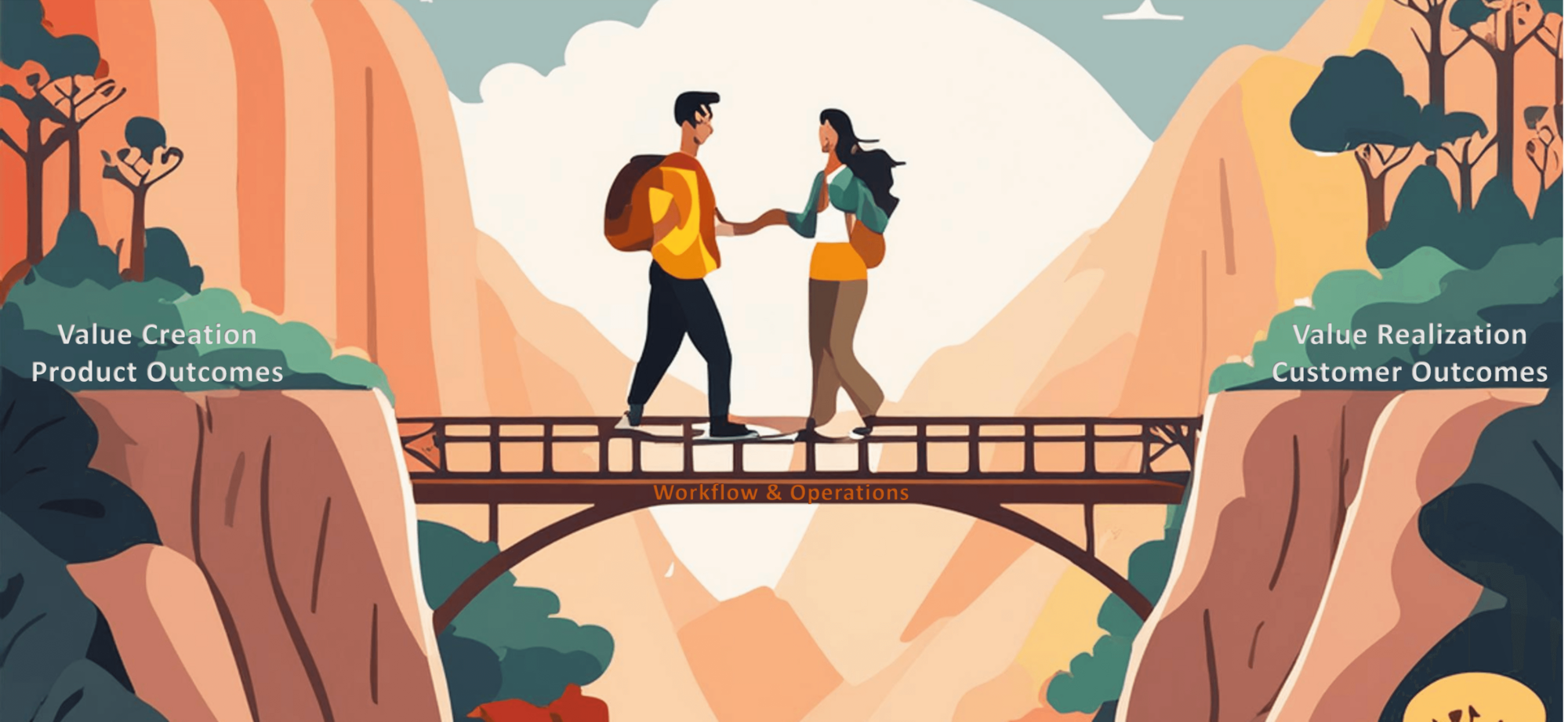Whether you’re a seasoned business leader, or a product manager with an innovative idea, crafting a bulletproof business case is often the pivot upon which decisions turn. It transcends mere ideation, morphing into a vivid vision supported by data, research, and strategic foresight.
1. Define the problem statement
The foundation of a business case is the problem it aims to solve. One can articulate the core premise of the case by defining, contextualizing and emphasizing the problem's urgency and pervasiveness for the targeted customers.
- Problem definition: A clear problem definition offers direction and acts as the anchor of your proposal. For example: Spotify is a digital music service that gives users access to millions of songs and targets the challenge of accessing music without illegal downloads.
- Background/context: Delving into the backdrop helps elucidate the problem's intricacies. Apple, before the iPhone launch, meticulously studied the prevailing mobile phone landscape, identifying glaring gaps and user frustrations.
- Why is it important, and why now? Reinforcing the problem's urgency fosters stakeholder buy-in. Explaining the business and customer impact of the inaction helps stakeholders to understand the negative consequences of not prioritizing the idea. Tesla, for instance, championed electric vehicles as environmental concerns peaked, ensuring its innovation resonated with global sentiment.
2. Make it factual
Facts supported by data are better than opinions, and they form the pillars of the business case. Grounding your argument in solid research, understanding your audience, and benchmarking against competitors gives it the necessary weight and credibility.
- Customer research: Airbnb, for instance, anchored its inception in meticulous research, discerning challenges that travelers faced with conventional lodging. Valid, comprehensive research ensures assumptions are minimized. Sharing actual customer quotes to show customer sentiment leads to stakeholders relating to customer pain points.
- Customer persona: A vivid customer persona you will serve and their pervasiveness enables product alignment. For example: Tech-savvy end user, software administrator, buyer or decision maker, and technology or business executive. As Jeff Bezos once remarked: "If you build a great experience, customers tell each other." Dropbox, in its nascent stages, catered to tech-savvy users requiring cross-device cloud storage, streamlining its offering with precision.
- Competitive benchmark: A grasp of competitors facilitates strategic positioning. A competitive benchmark should examine and compare top competitors' and substitutes’ market share, product features, pricing, marketing, key differentiators, geographies served, strengths, weaknesses, and customer reviews.
3. Show the potential
Demonstrating potential ensures stakeholders visualize the size of the opportunity. It's crucial to demonstrate the business potential of your idea. Highlighting data-driven opportunities, translating these into financial forecasts, and presenting a clear ROI paints a picture of success. Showcasing potential is like giving someone a telescope; it allows them to see distant stars more clearly.
- Market opportunity data: Grasping your total addressable market (TAM) crystallizes the opportunity's scope. The total addressable market data helps you understand the size of the target market and businesses can use TAM to objectively estimate a specific market's potential for growth. For example: UberEats connects users, restaurants, and delivery partners by tapping into an opportunity to connect users with local restaurants, by displaying the restaurant’s menus on users’ devices, and by delivery partners delivering the dish ordered to their doors.
- Financial forecast: Converting market insights into tangible financial projections can be compelling. Financial forecasting and showing the potential impact helps companies and leaders to make informed investment decisions about the future. It also helps to identify potential problems and pitfalls before they occur.
- Return on investment (ROI) and cost analysis: Balancing investments required against anticipated returns presents a pragmatic financial outlook. Consider Netflix's foray into original content, justified by projecting subscriber growth and enhanced retention.
4. Create a success plan
A clear, strategic plan details the journey from ideation to fruition. Outlining the roadmap, anticipating challenges, and setting up consistent feedback mechanisms ensure the business remains on course. A plan serves as the GPS for your business journey, guiding you through obstacles and ensuring you reach your desired destination. In the words of Benjamin Franklin: "By failing to prepare, you are preparing to fail."
- Roadmap: Building a product helps illustrate the strategic vision and align stakeholders across the company. The strategic product roadmap ladders up to broader product and company goals with specific efforts. A roadmap helps connect work across cross-functional teams and helps align those teams around common goals to create products and experiences that customers love. Broadly sharing the product roadmap with customers gets them excited about the product enhancements and expected releases in the future. A coherent plan, like Microsoft's periodic roadmap for Windows, offers stakeholders a transparent glimpse into future developments.
- Timeline and scalability: A project’s success hinges on timely execution, planned scalability, and adaptability based on market needs. For example: Kevin Johnson, Starbucks CEO, defined several strategic company priorities to achieve growth at scale. One of Starbucks' strategies is adding more stores every quarter and expanding its presence internationally.
- Potential challenges and regulatory landscape: Identification of hurdles, much like Uber's regulatory foresight, underscores preparedness, and resilience. Especially in healthcare, government, and the public sector, understanding the regulatory requirements, and how to handle customers’ personal identifiable information (PII) is key to building trust with customers.
- Stakeholder and feedback loop: Identifying internal experts who can provide guidance and advice on the continual alignment across the company and adaptation are hallmarks of sustainable success.
- Risk mitigation and exit strategy: Contingency planning showcases adaptability and foresight. Netflix’s strategic pivot from renting CDs to streaming content online and a subscription model underscores the importance of understanding the market and having an alternative roadmap.
5. Define and measure success metrics
Setting clear metrics is like setting milestones on a long road trip, marking your journey's progress. Peter Drucker, the management guru, put it best: "What gets measured gets improved." By setting clear success metrics, regularly monitoring progress, and considering broader societal impacts, businesses can ensure they remain aligned with their objectives and values.
- Define and measure success metrics: It is important to define what success looks like and how teams would measure it. Some examples of success metrics can be customer impact (customer satisfaction, customer growth, retention, engagement), financial metrics (revenue, cost, margin), and internal metrics (on-time and on-budget delivery, employee productivity). Establishing explicit metrics, akin to Spotify's emphasis on active user growth, ensures alignment across teams.
- Regular monitoring and SWOT (Strengths, Weaknesses, Opportunities, and Threats) analysis: Periodic assessments, backed by tools like SWOT, ensure strategies remain agile and relevant, much like Apple’s approach to assessing its product lineup in a rapidly evolving tech ecosystem.
- Sustainability and corporate social responsibility: A broader vision, factoring in societal and environmental impact, enhances brand equity. Patagonia’s unwavering commitment to sustainable practices has elevated its brand perception, showcasing that profit and responsibility can coexist harmoniously.
Conclusion
A bulletproof business case is more than just a document; it's a testament to thorough research, understanding and strategic vision. It’s a process that requires diligence, foresight, and a deep understanding of both the problem and the proposed solution. However, the rewards for this effort are significant: a well-crafted business case not only wins the trust of stakeholders but also serves as a roadmap for teams, aligning them with a unified purpose. As you embark on your next product idea or business venture, let this guide be your north star, ensuring that your path is always directed toward success.







